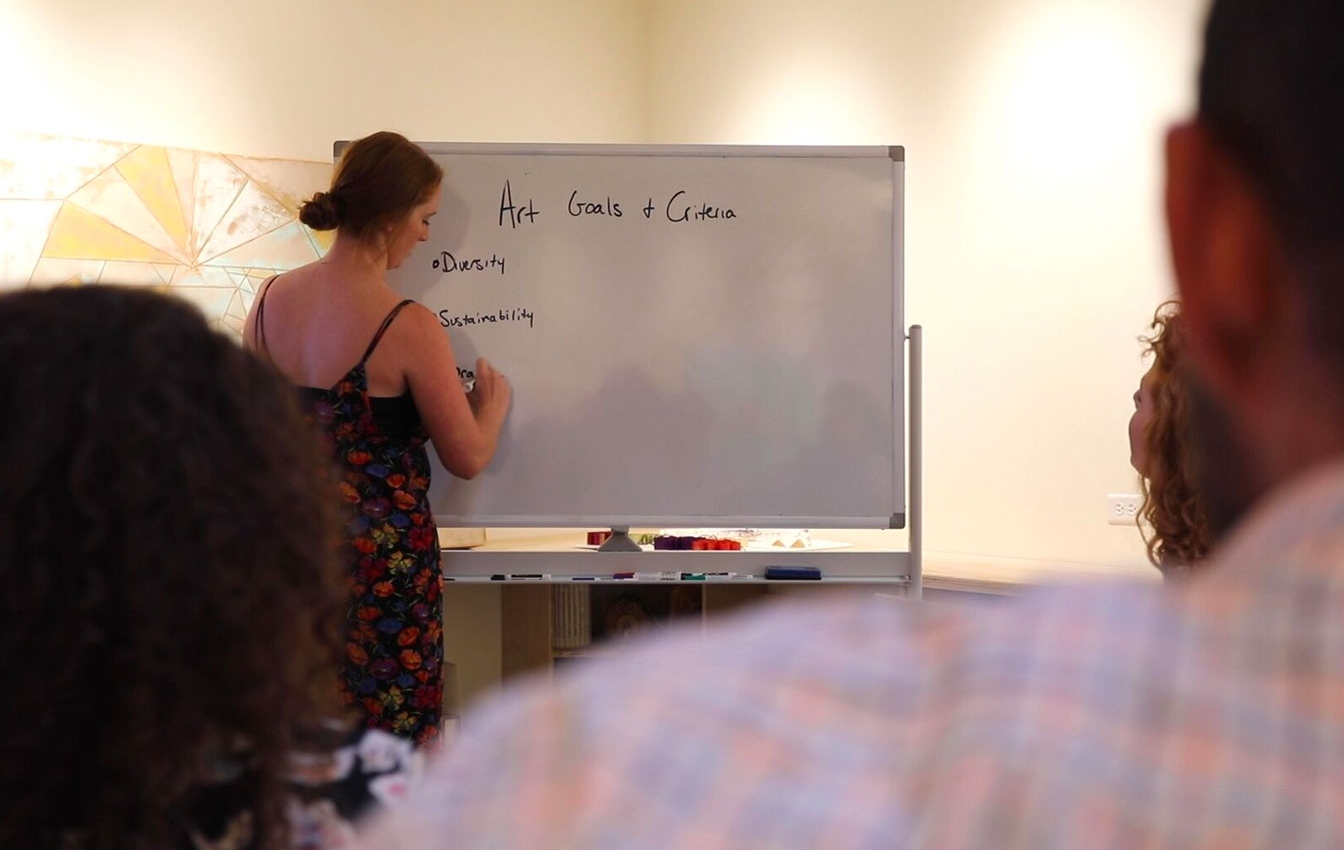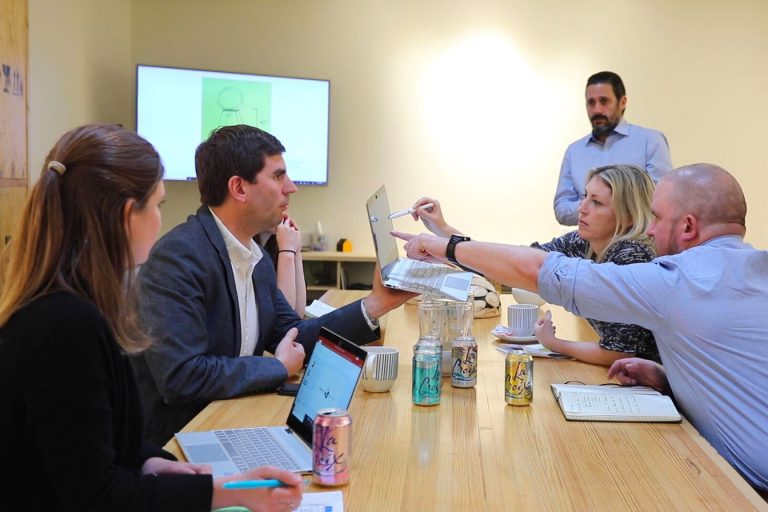First Things First: Crafting a Vision for Your Art Experience
Since launching NINE dot ARTS over nine years ago, we have curated hundreds of art experiences that have helped transform our clients’ spaces and communities across the U.S. and different parts of the world.
Taking ordinary spaces and turning them into memorable experiences is no easy feat, and we gladly accept the challenge – from delivering interactive and forward-thinking projects that help to connect brand and culture in business environments like this one at SendGrid, to public installations that inspire a new way of thinking like Shantell Martin’s then largest installation to date at the Denver Convention Center.

From our first art installation to now, we have learned invaluable lessons that have honed our craft and process. The most important of which, of course, is partnering with clients who embrace the transformative power of art. But we also have learned that the most powerful art experiences start with the foundation of a clear vision and well-defined goals.

To start the project’s journey, we make it a point to sit down with our clients (either in the same room or virtually) and collaboratively set a vision and road map for the project. This helps define a pathway for success and set the expectation that our working relationship is built on an exchange of ideas.
One unique talent of our organization is to identify and translate our client’s goals into something tangible. During these initial sessions, we dive deep into those goals within the context of a client’s brand to conceptualize an art program vision unique to the space, the brand, and what our clients hope to achieve.
The vision begins to take shape with a “visual preference survey” that helps to reveal the client’s ideas and preferred styles, colors, and art mediums. Combined with discussions around the program goals and the location planning information, this is what helps to shape the “concept boards” that our team will put in front of the client as the next step. These are samples of the types of artwork that we recommend curating. It’s the first step in showing what the art experience could eventually look and feel like.
Together, we’ll discuss opportunities and challenges, space and budget, and the timeline that will move through art selection and acquisition. Along with the concept boards, we’ll deliver a project road map with art acquisition schedules and detailed budget plans by location plan and priority. This work is at the core of what we do, and it puts our clients one step closer to an experience that connects their brand with the art that transforms their space.
We know that art can sometimes be complex and mysterious, but it doesn’t have to be. Over the coming weeks, we’ll take you behind the scenes of art consulting and curating by lifting the veil on the important steps and some of the not-so-well-known elements of our work, walking you through our entire process from vision development to installation.